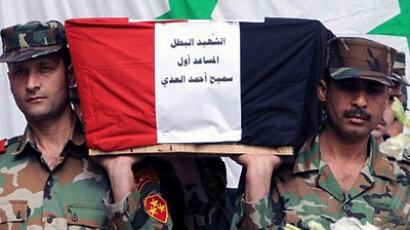‘No-fly zone is inefficient way to fight Syrian regime’
Despite reports of Syrian army defectors and protesters calling for a no-fly zone over the country and aerial support from NATO, it remains unclear whether those calling for alliance intervention fully understand the implications of a no-fly zone.
The Arab League condemned the continuing killing of Syrian civilians in anti-regime protests. The Arab ministerial committee is due to hold another round of talks with Syrian officials over the weekend to help end the crisis.The UN estimates that more than 3,000 people have been killed since March, when the uprising against President Bashar Al-Assad began. A recent attack by army deserters in Syria reportedly left 17 soldiers dead, according to human rights groups.Ufuk Ulutas, from the Turkey-based Foundation for Political, Economic and Social Research, says that while army defections would be a key step toward the downfall of the Syrian regime, the confrontation has not gotten to that stage yet. “I think both the Syrian regime and the defectors have been inflating their numbers,” he said. “They have been talking about 10,000 soldiers ready to fight against the regime. The other problem is the current defectors are not coming from the higher ranks of the Syrian army. In order to get that capability and that power to face the Syrian regime, they are going to have to have more defectors in terms of numbers, and also they have to make possible defections by high-ranked officials.” Speaking of the protesters’ call for a no-fly zone, Ulutas said that it is highly unlikely that the no-fly zone will be implemented any time soon.“Using a no-fly zone like the one in Libya would not be an efficient way to face [off] with the Assad regime,” he said. “When we see the development of the protests and the brutal crackdown of the [government] against the protesters, we see that the regime has been using its land forces a lot, except for the occasional use of helicopters.”Ulutas spoke of the strong parallels in protesters’ minds between Libya and Syria, but warned that it could spell problems for Syria.“This is a great error,” he declared. “When we look at the Libyan case, we see that [Libya] had already been geographically divided. We had two armies fighting each other. The Libyan air force was used, at the time against the opposition forces. [Protesters in Syria] compare this to Libya because they saw that there was success in Libya. When we look at the Syrian case, it is completely different. Syrian geography does not [allow for] a scenario like the one in Libya.”














